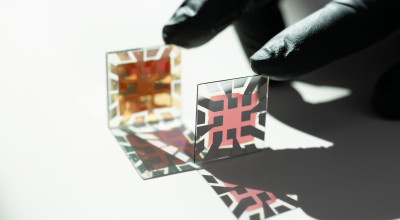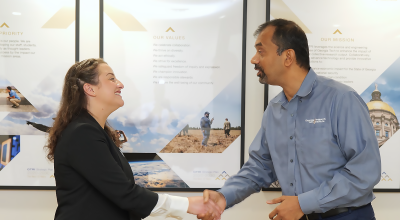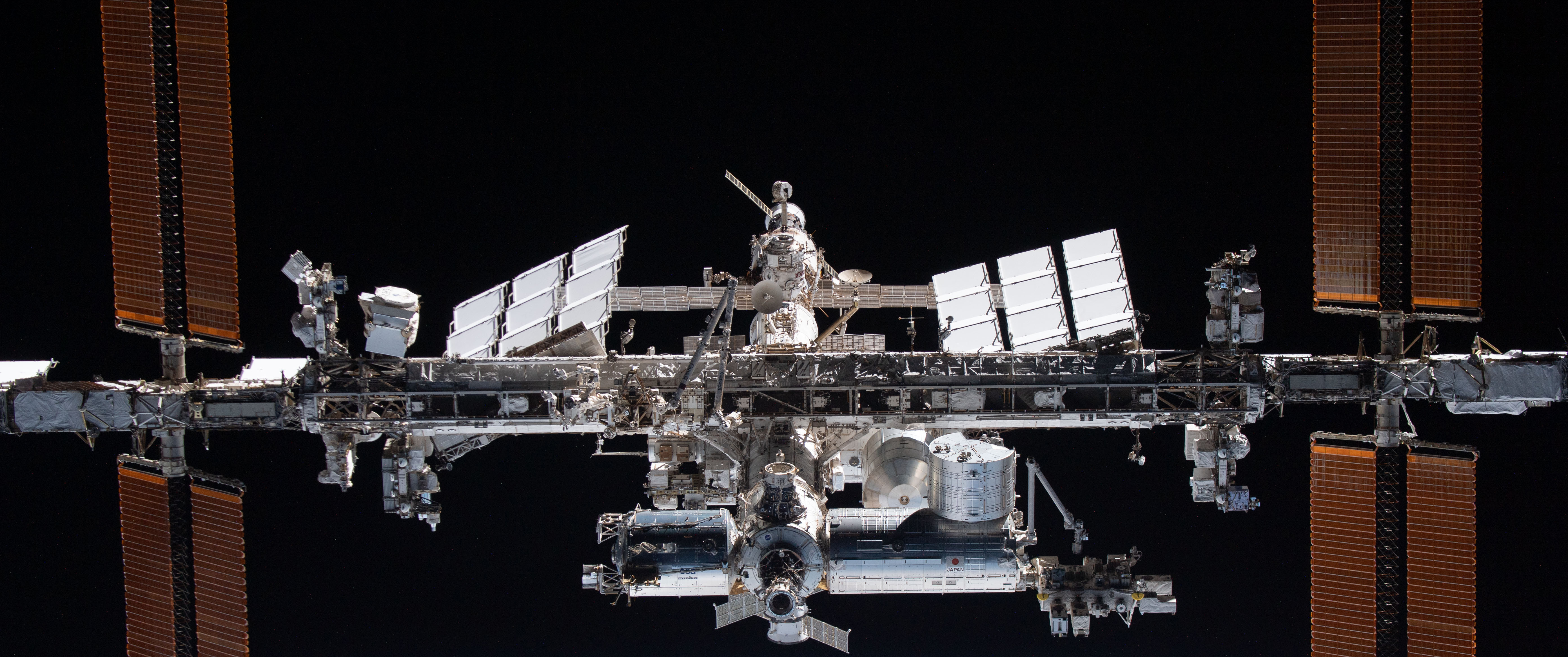
Solar cells account for approximately six percent of the electricity used on Earth; however, in space, they play a significantly larger role, with nearly all satellites relying on advanced solar cells for their power. That’s why Georgia Tech researchers will soon be sending 18 photovoltaic cells to the International Space Station (ISS) for a study of how space conditions affect the devices’ operation over time.
To be installed in the Multi-purpose International Space Station Experiment (MISSE) Flight Facility on the exterior of the ISS, the cells will be studied over a six-month period, providing researchers with detailed information on factors affecting their operation in the harsh conditions of space. Among the goals are to obtain data useful for reducing weight and boosting both efficiency and reliability of the devices.
The devices under test will include halide perovskite-based cells, a likely materials platform for next-generation solar cells. Composed of a combination of materials that can be varied according to conditions, halide perovskites differ from the gallium arsenide (GaAs) family of materials commonly used in space – and from the silicon cells common for use on Earth. Which perovskite recipe works best in space applications will be among the questions the Georgia Tech researchers hope to answer.
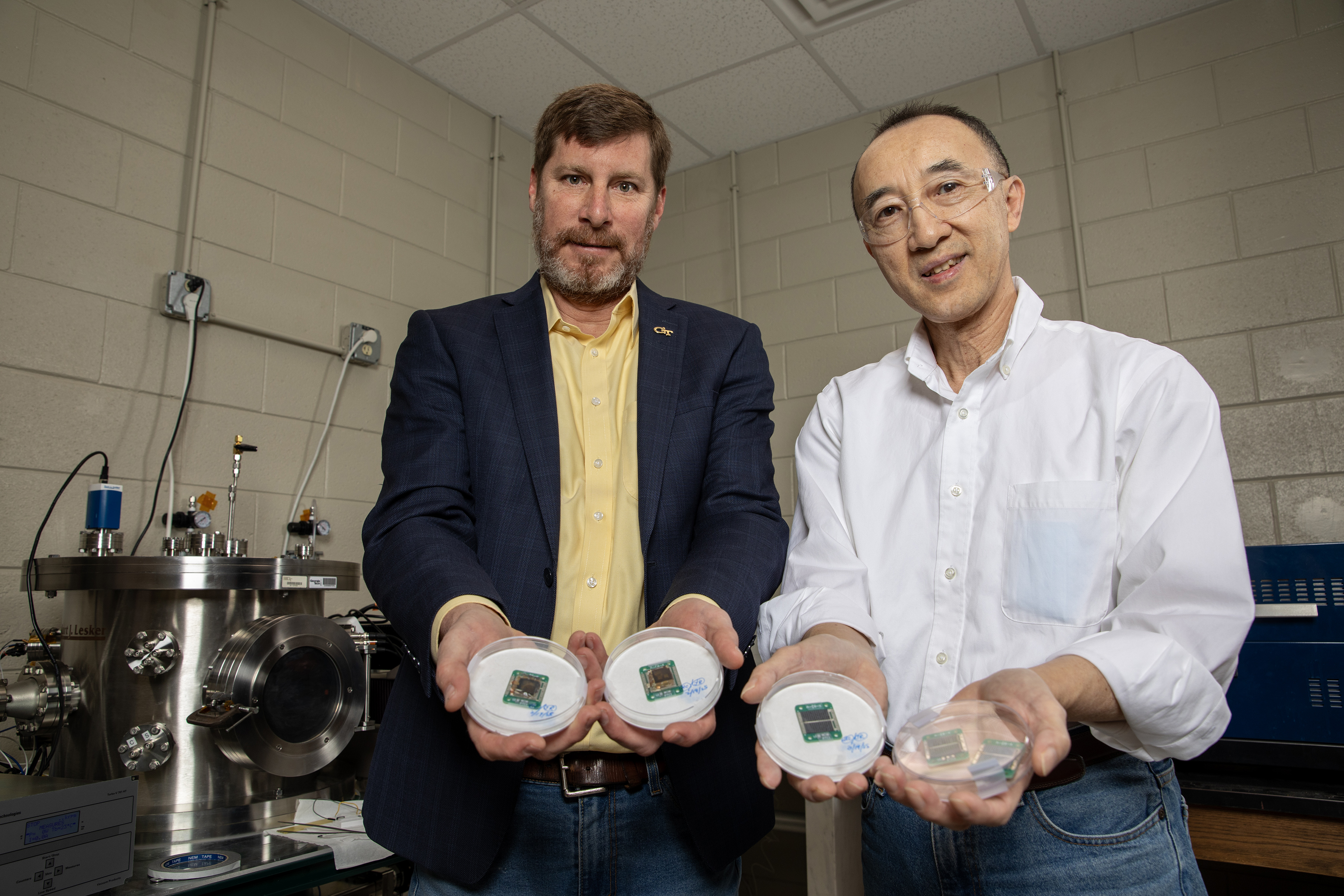
The test cells will also include silicon-based devices, photovoltaic cells based on III-V materials – so-called because they utilize combinations of materials from the third and fifth rows of the periodic table of the elements – and infrared photodetectors designed for use in space.
“The main goal here is to improve power generation in space,” said Jud Ready, principal research engineer at the Georgia Tech Research Institute (GTRI) and Associate Director of External Engagement with Georgia Tech’s Institute for Matter and Systems. “The limiting factor on the performance of a spacecraft is usually how much power you can produce. Power, size, weight, complexity, cost – all of these are tied closely to the electrical generation of the solar panels.”
MISSE is owned and operated by Aegis Aerospace Inc., which has recently added a new component that will allow measurement of the current-voltage relationship (I-V curve) for photovoltaic devices while they are operating on the exterior of the ISS. With this new capability, cameras, and other instrumentation, the facility will gather data about operation during dramatic temperature swings, frequent changes in illumination levels, space-borne radiation, impact of space debris, and exposure to the erosive effects of atomic oxygen.
The Georgia Tech devices are planned for launch later in 2025 as part of Aegis Aerospace’s MISSE-21 mission.
Perovskite Cells Test Chemistries
Juan-Pablo Correa-Baena, a professor in Georgia Tech’s School of Materials Science and Engineering, develops perovskite solar cells that have efficiencies of around 22 percent. These cells can be cheaper, thinner, easier to produce, more flexible – and more tolerant of radiation – than more traditional solar cell materials. But they tend to degrade over time.
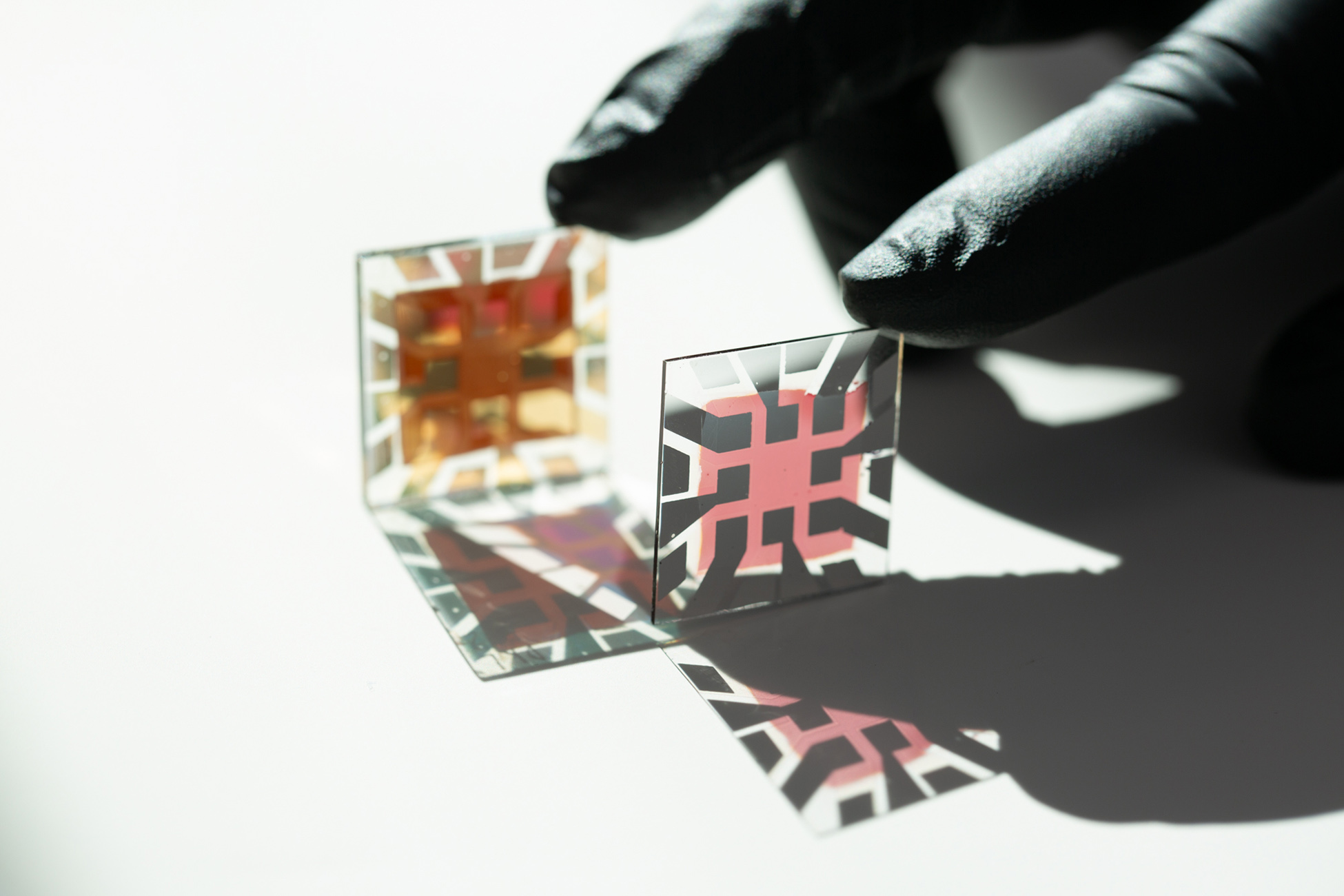
“We’ve been doing a lot of work to prevent those degradation processes from happening, using things like encapsulants that are hydrophobic,” he said. “And there are hundreds of different chemistries that we’ve been working with to try to make these materials more resilient. For us, one of the goals of this mission is to learn how the different chemistries we produce will behave when they are in space.”
Perovskite materials can produce power with layers just a fifth or sixth as thick as conventional solar cell materials, and they more easily conform to surfaces, noted Carlo Andrea Riccardo Perini, a research scientist in Correa-Baena’s lab. “With a much thinner layer, you can make the cells lighter,” he said.
The Georgia Tech perovskite cells going into space utilize combinations of materials such as lead, iodine, indium, and gold in varying proportions. The researchers hope their work will provide a pathway to better power performance in future generations of spacecraft.
“Solar energy is what powers anything in space, so it is crucial that we continue to look at these emerging technologies as replacements for what exists now,” Correa-Baena said. “Only a few missions have studied perovskites in space, so we hope to expand that knowledge.”
Improving Performance of Silicon-Based Cells
Also onboard the upcoming mission will be silicon-based solar cells developed in Georgia Tech’s University Center of Excellence for Photovoltaics Research and Education (UCEP) in the School of Electrical and Computer Engineering. These test cells are fabricated on p-type boron-doped silicon substrates with a phosphorous-doped emitter and industry-standard silicon nitride (SiNx) anti-reflection coatings. The rear contact of the cells employs an ultra-thin (15 Angstrom) tunnel oxide capped by a heavily boron-doped layer designed to reduce recombination loss and minimize contact resistance.
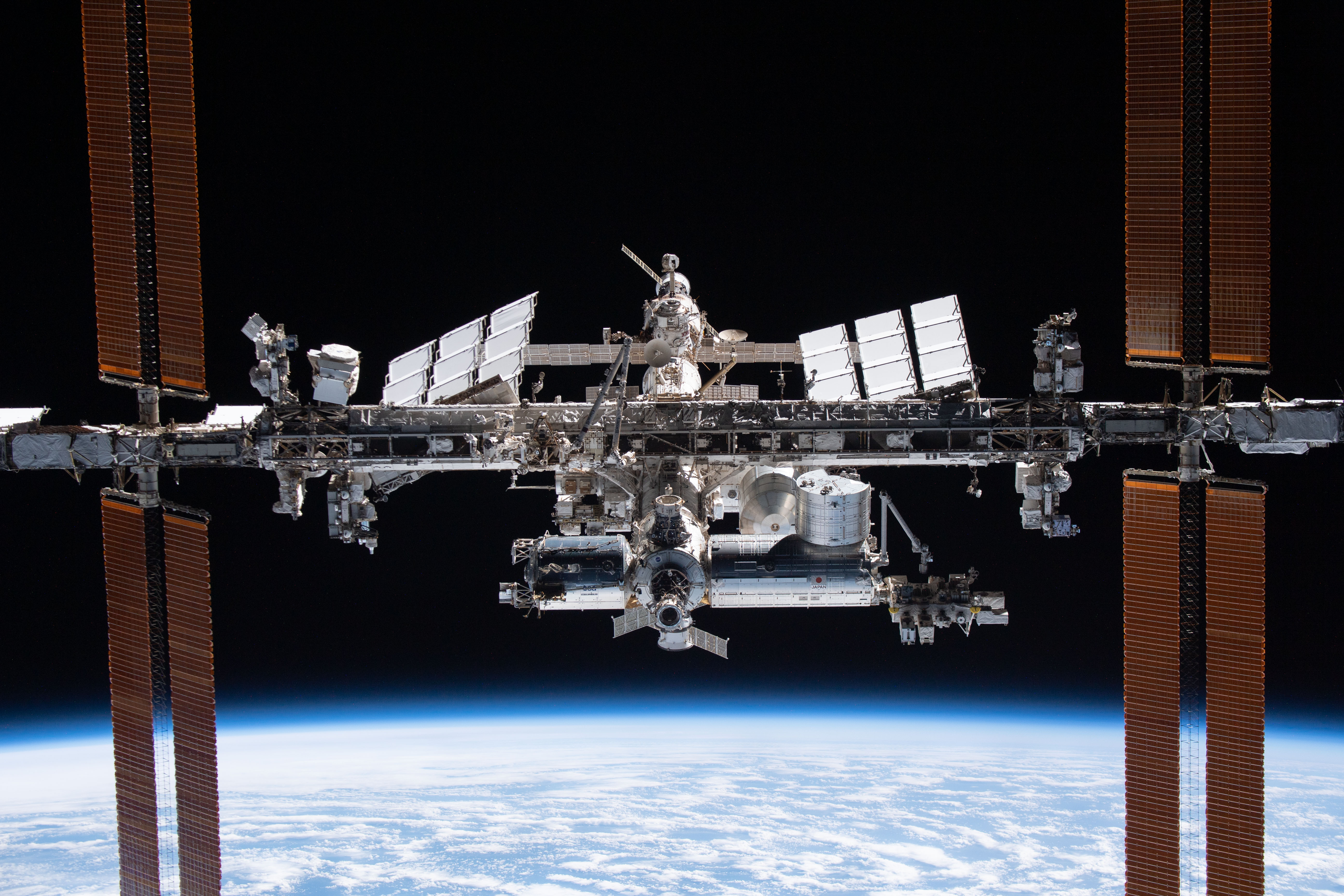
“This is a relatively new technology for terrestrial photovoltaics, and we aim to establish a baseline by examining how the cell structure responds to particle bombardment and radiation exposure in space,” explained Brian Rounsaville, a UCEP research scientist.
To evaluate the radiation tolerance of these devices, the team will measure the beginning-of-life power output under extraterrestrial conditions, prior to atmospheric attenuation, as well as the end-of-life power output after prolonged space exposure. They will also assess the degree of performance recovery, if any, following degradation. Upon return from the ISS, the cells will undergo detailed post-flight characterization at UCEP to analyze structural and electrical changes in the device.
Studying Ultrasensitive Infrared Photodetectors
Beyond photovoltaics for power, space missions also rely on sensors, particularly those that operate at infrared wavelengths.
A research team headed by Associate Professor Jason Azoulay in Georgia Tech’s School of Chemistry and Biochemistry and School of Materials Science and Engineering will be testing a new class of infrared photodetectors that could be useful in space for detecting thermal emissions, conducting atmospheric studies, and handling other measurement and activities.
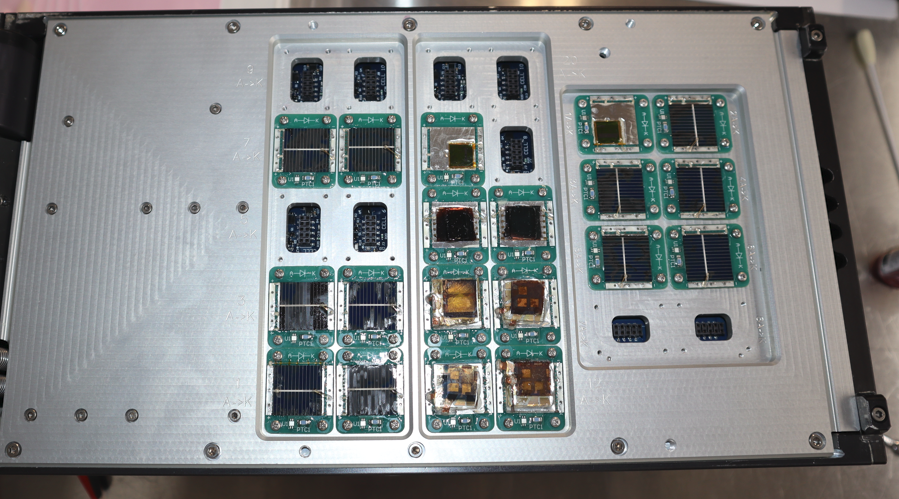
The devices that will be tested are fabricated from a solution-processed narrow bandgap conjugated polymer that provides ultrasensitive photodetection. These devices could replace existing detectors based on inorganic semiconductors – such as mercury cadmium telluride – that require complex manufacturing steps, are large and costly to make, and require cooling.
The organic photodetectors built in Azoulay’s Georgia Tech lab have already been tested for their resistance to radiation, and the MISSE-21 mission will provide further confirmation of their potential value for space applications. “We want to understand their performance in ‘true’ space environments and under operational conditions in these demanding conditions,” he explained.
Azoulay, who is also Georgia Research Alliance Vasser Woolley Distinguished Investigator, and Graduate Research Assistant Chih-Ting Liu, have provided two varieties of these devices for evaluation.
Flexible III-V Materials Tested for Power Beaming Applications
Power beaming – transferring power from one spacecraft to another – could be important in the future for such applications as maintaining large fleets of satellites. Advanced photovoltaic technologies based on III-V materials could help optimize the transfer of power to and from those satellites using laser beams.
GTRI Principal Research Scientist Brent Wagner and his team are working with MicroLink Devices, a company that produces flexible photovoltaic cells using combinations of aluminum, indium, gallium, phosphorus, and arsenic. The proportion of these elements can be tailored to most efficiently absorb power carried in specific wavelengths of laser light.
For maximum efficiency, photovoltaic cells intended to capture energy from the sun must be designed to absorb light from many wavelengths of the solar spectrum. Narrowing the absorption to a specific laser wavelength allows optimization that can dramatically boost efficiency while reducing unwanted heat.
The company’s high-efficiency, single- and multi-junction cells are manufactured using a proprietary epitaxial lift-off (ELO) technology, in which the solar cell structure is removed from the substrate on which it is grown. The combination of wavelength specificity and light weight could make them particularly useful for power beaming in space, Wagner noted. The company’s devices are already used on Earth in long-endurance stratospheric unmanned aerial vehicles (UAVs).
“This MISSE-21 mission provides an opportunity to study how these materials perform in a space environment from the standpoint of radiation hardness and exposure to the space environment,” Wagner added. “The flexibility of these devices could also allow give them advantages.”
A Photovoltaic Materials Testing Lab in Space
Georgia Tech has a long history of space testing for a variety of materials, including photovoltaic cells. The MISSE-21 mission will be the first to use the Orbital Electronics Lab (OEL) facility created by Aegis Aerospace and Angstrom Designs, Inc. to provide solar cell test and calibration capabilities. The facility measures current and voltage in devices, allowing researchers to study operation of solar cells in low Earth orbit aboard the ISS.
“Aegis Aerospace operates the MISSE flight facility on the ISS as a commercial endeavor,” Ready explained. “They have created a new capability specifically designed to test solar cells, creating what are called IV curves to provide data on real-time operation.”
Before shipment to Aegis Aerospace in March, the test cells were packaged in GTRI’s Center for Space Hardware Assembly, Fabrication and Testing (C-SHAFT) by Senior Research Engineer Hunter Chan. The packaging included the electrical connections needed to make the IV measurements. After their time in space, the cells are scheduled to be returned to campus in 2026.
Writer: John Toon (john.toon@gtri.gatech.edu)
GTRI Communications
Georgia Tech Research Institute
Atlanta, Georgia USA
About the Georgia Tech Research Institute (GTRI)
The Georgia Tech Research Institute (GTRI) is the nonprofit, applied research division of the Georgia Institute of Technology (Georgia Tech). Founded in 1934 as the Engineering Experiment Station, GTRI has grown to more than 3,000 employees, supporting eight laboratories in over 20 locations around the country and performing more than $919 million of problem-solving research annually for government and industry. GTRI's renowned researchers combine science, engineering, economics, policy, and technical expertise to solve complex problems for the U.S. federal government, state, and industry.


